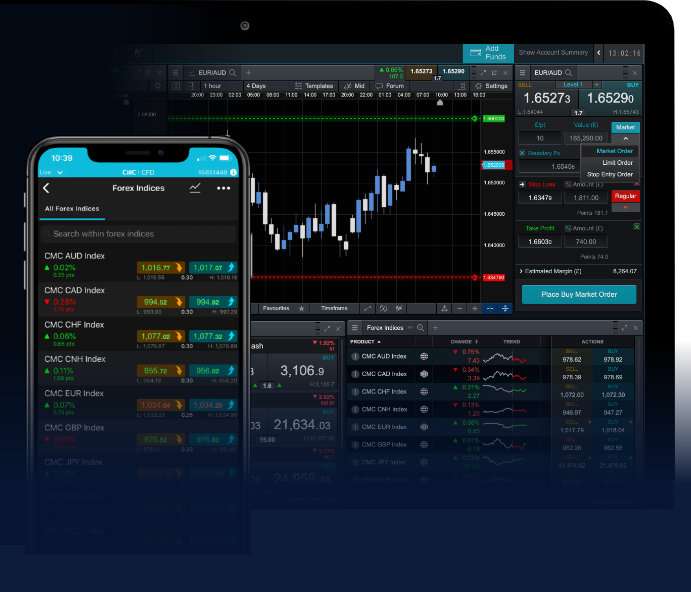
Mastering Forex Trading: A Comprehensive Guide for Success
Forex trading, or foreign exchange trading, refers to the buying and selling of currencies in the global market. It is the largest financial market in the world, with a daily trading volume exceeding $6 trillion. Unlike stock trading, forex trading does not take place on a centralized exchange but rather in an over-the-counter (OTC) environment. This article will delve into the fundamentals of forex trading, including essential strategies, risk management techniques, and the tools available for traders. To enhance your trading experience, consider platforms like trading forex Trading Broker ID that can provide valuable resources and guidance.
Understanding the Forex Market
The forex market is open 24 hours a day, five days a week, facilitating trades across different time zones. Currency trading involves pairs, such as EUR/USD or GBP/JPY, where one currency is exchanged for another. The first currency in the pair is the base currency, and the second is the quote currency. The price of a currency pair shows how much of the quote currency is needed to purchase one unit of the base currency.
Currency Pairs
There are three primary categories of currency pairs:
- Major Pairs: These pairs include the most traded currencies, such as EUR/USD, USD/JPY, and GBP/USD.
- Minor Pairs: These pairs do not involve the US dollar, like EUR/GBP and AUD/NZD.
- Exotic Pairs: These consist of a major currency paired with a currency from a developing economy, such as USD/TRY (Turkish Lira) or USD/SEK (Swedish Krona).
Basic Concepts of Forex Trading
To become a successful forex trader, it’s vital to grasp the following concepts:
1. Pips and Lots
A pip is the smallest price movement in a currency pair, generally represented as the fourth decimal place (0.0001) for most pairs. A standard lot in forex trading typically represents 100,000 units of the base currency; however, there are also mini lots (10,000 units) and micro lots (1,000 units) that traders can choose from based on their risk appetite.
2. Leverage
Leverage allows traders to control a larger position with a smaller amount of capital. For example, a leverage ratio of 100:1 means that for every $1 in your account, you can control $100 in the market. While leverage can amplify profits, it also increases the potential for losses, making risk management crucial.
3. Margin
Margin is the amount of money required to open a leveraged position. It’s essential for traders to understand how margin works, as it can affect their ability to maintain positions during market fluctuations.
Forex Trading Strategies
Successful forex trading requires a well-thought-out strategy. Here are some popular strategies employed by traders:
1. Scalping
Scalping involves making numerous trades throughout the day, aiming to capture small price changes. Scalpers typically hold positions for a few seconds to minutes and rely on high leverage and precise entry points.
2. Day Trading
Day trading focuses on opening and closing brokers within the same trading session, with the goal of profiting from short-term price movements. Day traders analyze market trends and use technical indicators for decision-making.

3. Swing Trading
Swing traders hold positions for several days or weeks, looking to profit from market swings. This strategy requires less intense monitoring compared to scalping or day trading, making it suitable for individuals who cannot dedicate all day to trading.
4. Position Trading
Position trading is a long-term strategy where traders hold positions for months or years. This approach is often based on fundamental analysis rather than short-term price movements.
Tools for Forex Trading
To enhance trading performance, traders can utilize various tools and platforms:
1. Trading Platforms
Modern trading platforms offer a wide range of features, such as charting tools, real-time data, and automated trading capabilities. Popular platforms include MetaTrader 4 (MT4), MetaTrader 5 (MT5), and TradingView.
2. Technical Analysis Tools
Technical analysis involves analyzing price movements and chart patterns to forecast future price behavior. Indicators such as moving averages, Relative Strength Index (RSI), and Bollinger Bands are commonly used by traders.
3. Economic Calendar
An economic calendar lists upcoming economic events, such as interest rate decisions and employment reports, which can impact currency prices. Traders often use this tool to anticipate market movements and adjust their strategies accordingly.
Risk Management in Forex Trading
Effective risk management is key to achieving long-term success in forex trading. Here are several strategies to consider:
1. Setting Stop-Loss Orders
A stop-loss order automatically closes a position when a specific price level is reached, limiting potential losses. Traders should always set a stop-loss order to protect their capital.
2. Position Sizing
Position sizing involves determining the number of lots to trade based on account size and risk tolerance. A common rule is to risk no more than 1-2% of the trading capital on a single trade.
3. Diversification
Diversifying trading positions across various currency pairs can help mitigate risk. By spreading investments, traders can reduce the impact of market volatility on their overall portfolio.
Conclusion
Forex trading offers exciting opportunities for gaining profit in the fast-paced financial markets. By understanding the fundamentals, developing a sound trading strategy, and implementing effective risk management techniques, traders can enhance their chances of success. As you venture into the world of forex, remember that continuous learning and practice are essential for refining your skills and adapting to market changes. With the right tools and mindset, you can navigate the forex landscape and build a rewarding trading career.
